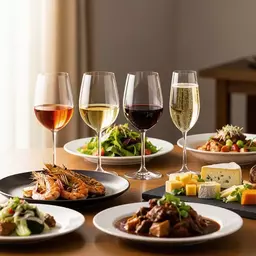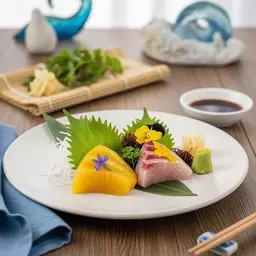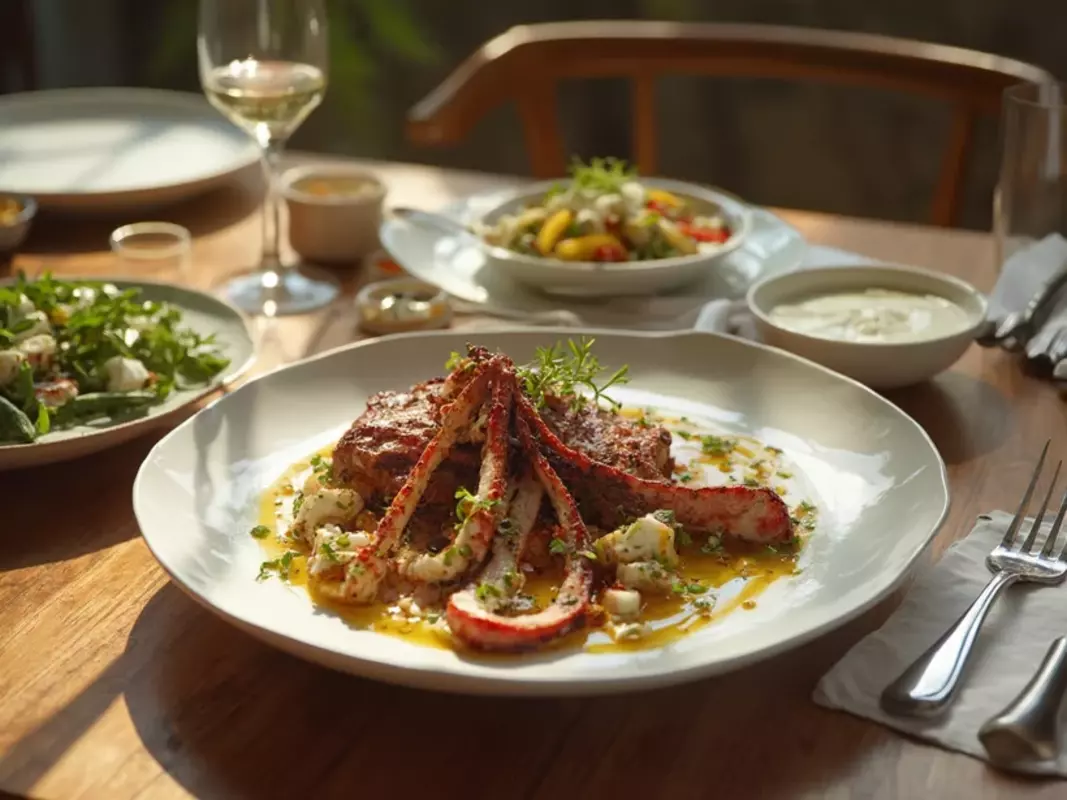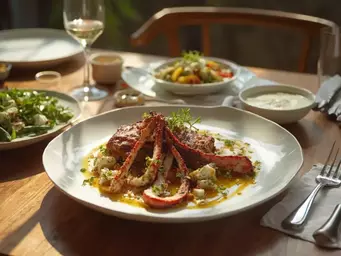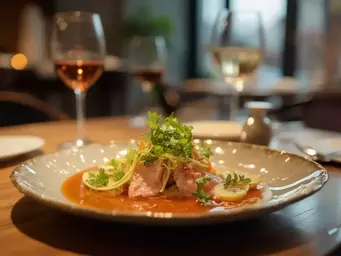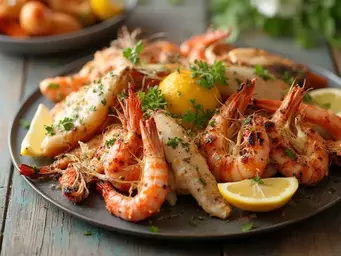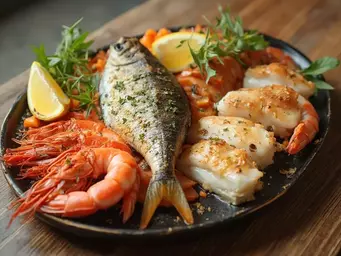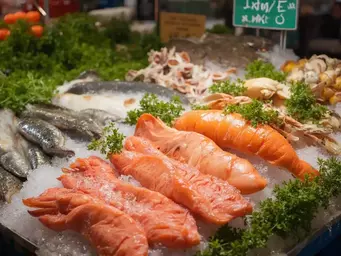Regional Flavors of Australian Dining
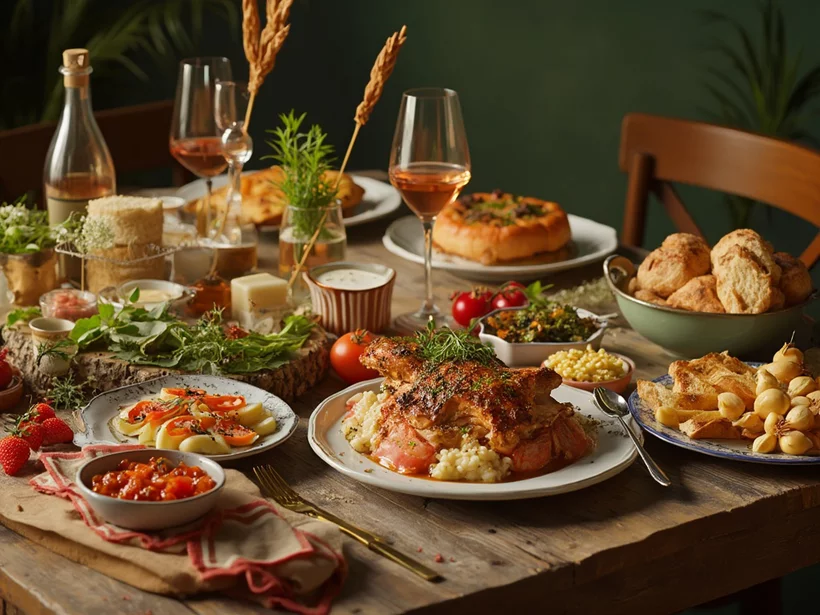
Ever wondered how a single meal can encapsulate the essence of a country? Australia’s culinary landscape is rich with stories, traditions, and flavors that reflect its diverse heritage. Dive into the world of regional dining and discover the unique tastes that define Australian cuisine.
What You Will Learn
- Australian cuisine is a cultural mosaic influenced by Indigenous heritage, immigration, and local produce.
- Immigration has enriched Australian dining with flavors from Italian, Asian, and Middle Eastern cuisines.
- Regional specialties play a crucial role in showcasing Australia’s unique culinary identity.
- Sustainable sourcing and farm-to-table practices are becoming essential in modern Australian dining.
- Culinary tourism fosters appreciation for local flavors and community connections.
- Authenticity in food practices highlights the importance of cultural heritage and local stories.
- Engaging with local chefs and food artisans opens doors to unique culinary experiences.
The Diverse Ingredients and Influences Shaping Australian Cuisine
Australian food culture is a dynamic blend of Indigenous heritage, global immigration, and a strong connection to local produce. This visual highlights the key elements that contribute to Australia's unique culinary identity and the popular cuisines found across its states.
Influences on Australian Food Culture
Indigenous Ingredients (Bush Tucker)
Immigration (Global Cuisines)
Local Produce (Sustainability)
Popular Cuisines Gaining Traction
Japanese Cuisine (Urban)
Indian Flavors (Regional)
Italian Flavors (Regional)
Understanding Regional Australian Dining
Australia’s dining scene is a vibrant tapestry woven from rich cultural influences and local traditions. At The Yellow Tail Table, I believe that understanding regional Australian dining means diving into the stories behind the food we savor. From the bustling urban kitchens to the serene coastal eateries, every dish reflects a unique blend of flavors, histories, and community connections that are truly Australian.
At the heart of this culinary exploration is the essence of Australian cuisine: a cultural mosaic that brings together diverse influences from our history and people. This article will take you on a journey through the flavors and practices that define our dining landscape.
The Essence of Australian Cuisine: A Cultural Mosaic
Defining Australian Food Culture and Its Influences
Australian food culture is characterized by a harmonious blend of both traditional and contemporary influences. It draws from our Indigenous heritage, colonial past, and modern global interactions, creating a distinct culinary identity that honors the land and its people. Here are some key influences:
- Indigenous ingredients: Native foods like bush tomatoes and finger limes enrich our palates.
- Immigration: Waves of settlers have brought their culinary traditions, enriching our dining experience.
- Local produce: Fresh seafood, meats, and fruits reflect our commitment to sustainability.
These elements combined not only create delicious dishes but also tell the stories of the communities that produce them. Through my experiences at The Yellow Tail Table, I've witnessed how these influences come together to form a rich culinary narrative.
Exploring the Impact of Immigration on Local Flavors
Immigration has played a pivotal role in shaping Australia’s food landscape. Waves of settlers from countries like Italy, Greece, and Asia have introduced new flavors and cooking techniques, transforming our culinary scene into a melting pot of tastes. This diversity is noted in reports like the Australian Food Story report, which highlights the broad culinary influences. Consider how:
- Italian influences: Pasta and pizza have become staples in Aussie households.
- Asian cuisine: Dishes like pho and sushi are now commonplace, reflecting our multicultural society.
- Middle Eastern flavors: Hummus and kebabs have found a cherished place in our food culture.
This culinary diversity not only enriches our dining experiences but also fosters connections among communities. My journey through Australian cuisine has always highlighted this beautiful blend, reminding us that food is a universal language.
Popular Cuisines Across Australian States
How Japanese Cuisine is Shaping Dining in Urban Australia
Japanese cuisine has seen a significant rise in popularity, particularly in urban areas. With its emphasis on fresh ingredients and delicate flavors, it perfectly complements the Australian love for quality produce. In cities like Melbourne and Sydney, you’ll find:
- Sushi bars: Offering fresh, high-quality sushi rolls and sashimi.
- Ramen shops: Serving comforting bowls of rich, flavorful broth.
- Modern izakayas: Creating a relaxed atmosphere for sharing plates and enjoying drinks.
As a food enthusiast, I can attest to the delightful experiences that these Japanese influences bring to our dining culture. They not only offer new flavors but also inspire chefs to innovate and blend cuisines.
The Rise of Indian and Italian Flavors in Regional Dining
In recent years, we’ve also seen Indian and Italian cuisines gaining traction in regional dining. They bring warmth and comfort through their hearty dishes. Here’s what you can expect:
- Indian curries: Full of spices and flavors that warm the soul.
- Italian pastas: Crafted with love and fresh ingredients, often highlighting local produce.
- Wood-fired pizzas: A favorite across the country, perfect for casual gatherings.
These cuisines not only satisfy our taste buds but also foster a sense of community as families and friends gather around shared meals. Engaging with these flavors at The Yellow Tail Table has allowed me to see how they resonate with our dining culture.
Traditional Australian Dishes and Their Origins
Examining Bush Tucker and Indigenous Ingredients
Bush tucker, or Indigenous Australian food, is a crucial part of our culinary heritage. It emphasizes the importance of connection to the land and sustainable practices. By utilizing native plants and animals, such as wattleseed and kangaroo, we can create dishes that honor our history. Let’s explore some key ingredients:
- Macadamia nuts: A delicious addition to both sweet and savory dishes.
- Bush tomatoes: Often used in sauces and chutneys for extra flavor.
- Finger limes: A zesty garnish that adds a unique twist to seafood dishes.
Through my exploration of these ingredients, I’ve discovered their rich flavors and cultural significance, reminding us to respect and celebrate our land.
The Role of Seafood in Coastal Australian Dining
Living in Australia, I’ve come to appreciate the prominent role seafood plays in our coastal dining culture. Our vast coastline provides a bountiful supply of fresh fish, crustaceans, and mollusks. Popular choices include:
- Barramundi: A favorite among chefs and seafood lovers alike.
- Moreton Bay bugs: Sweet and tender, they make for fantastic dishes.
- Oysters: Enjoyed fresh on the half shell or cooked in various recipes.
Each seafood dish I’ve tried tells a story of our coastal communities and their deep connection to the ocean. This culinary heritage deserves to be celebrated and explored.
Celebrating Iconic Dishes: Meat Pies, Pavlova, and Anzac Biscuits
We can’t discuss traditional Australian foods without mentioning some iconic dishes that evoke nostalgia and pride. Each has its origins and significance in our culture:
- Meat pies: A beloved comfort food, often enjoyed at sporting events.
- Pavlova: A light dessert, popular at celebrations, featuring a crispy meringue topped with cream and fruit.
- Anzac biscuits: A sweet treat with a rich history, originating from World War I.
These dishes not only satisfy our hunger but also remind us of the stories and memories tied to our culinary heritage. Experiencing them is like taking a step back in time!
Understanding the Importance of Regional Specialties in Australian Cuisine
Every region in Australia boasts its unique culinary specialties, deeply rooted in local culture and produce. By embracing these regional dishes, we can celebrate the diversity within our food landscape. For example:
- Tasmania: Known for its exquisite seafood and artisanal cheeses.
- Queensland: Famous for tropical fruits and fresh seafood.
- Victoria: Renowned for its wine regions and Mediterranean flavors.
As I travel and share my experiences at The Yellow Tail Table, I find that exploring these regional specialties enriches our understanding of what it means to be Australian. It’s a journey worth taking!
Modern Australian Dining Trends
Sustainable Sourcing and Farm-to-Table Practices
In today’s culinary world, sustainability has become a cornerstone of dining practices. Many restaurants and chefs are focusing on sourcing ingredients locally and embracing farm-to-table approaches. This reflects a growing awareness of food systems and their impact on our health and environment. Key trends include:
- Supporting local farmers: Chefs are forging relationships with local producers to obtain the freshest ingredients.
- Minimizing food waste: Creative uses for leftovers are becoming more common in restaurants.
- Seasonal menus: Highlighting what’s available at different times of the year encourages diners to explore.
As a food enthusiast, I’m inspired by how these practices not only enhance flavor but also connect us to our land and community. For more insights on food and nutrition, you can refer to the Australian Bureau of Statistics' latest release.
Innovations in the Kitchen: Fusion and Contemporary Techniques
Modern Australian dining is also characterized by innovation and creativity in the kitchen. Chefs are experimenting with fusion cuisine and contemporary techniques that blend different culinary traditions. This approach has led to exciting dishes such as:
- Pumpkin and feta risotto: A delightful mix of Italian technique with local ingredients.
- Spicy prawn tacos: Combining Mexican flavors with Australian seafood.
- Charred kangaroo with native herbs: A unique take on traditional Australian ingredients.
At The Yellow Tail Table, I celebrate these innovations, which remind us that the culinary journey is ever-evolving and full of surprises!
The Growth of Culinary Tourism and Its Impact on Regional Dining
Culinary tourism has experienced a surge in recent years, with food lovers traveling to experience local tastes and traditions. This trend has encouraged regions to showcase their unique culinary offerings, creating opportunities for both locals and visitors. Here are some ways culinary tourism is impacting regional dining:
- Food festivals: Celebrating local produce and dishes, attracting tourists from all over.
- Farm tours: Allowing guests to see where their food comes from and taste it fresh.
- Cooking classes: Offering hands-on experiences that connect participants with local chefs and traditions.
Through my travels and experiences, I’ve seen how culinary tourism fosters a deeper appreciation for local ingredients and the stories behind them.
Regional Food Memoirs and Storytelling
The Significance of Authenticity in Local Food Practices
Authenticity is a vital aspect of regional Australian dining. It’s about honoring the traditions and stories of the people who grow, prepare, and serve the food. Emphasizing authenticity involves:
- Respecting cultural heritage: Understanding the origins of dishes and their significance.
- Preserving traditional methods: Keeping alive the cooking techniques passed down through generations.
- Celebrating local stories: Sharing narratives that connect us to the land and each other.
As I share stories through The Yellow Tail Table, I aim to highlight these authentic practices that enrich our culinary experiences.
Engaging with Local Chefs and Food Artisans
Connecting with local chefs and food artisans provides a treasure trove of insights into regional food practices. Their passion and expertise shine through in their dishes, and by engaging with them, we can discover:
- Unique flavor combinations: Chefs often create dishes that reflect their personal culinary journeys.
- Behind-the-scenes knowledge: Learning about sourcing and preparation methods enhances our appreciation.
- Community connections: Chefs often collaborate with local farmers and producers, highlighting the importance of community.
By sharing their stories, we deepen our connection to the food we eat and the people who create it.
Exploring Community Gatherings and Their Role in Food Traditions
Community gatherings are essential in celebrating food traditions and fostering connections among people. From local markets to cultural festivals, these events highlight the importance of coming together to share meals and stories. Here are some examples:
- Harvest festivals: Celebrating local produce with communal feasting.
- Food markets: Providing opportunities to sample and purchase regional specialties.
- Cooking competitions: Engaging the community in friendly culinary rivalry.
Participating in these gatherings allows us to experience the richness of our culinary heritage and the stories that accompany it.
Interactive Regional Dining Experiences
How to Navigate Local Food Markets and Festivals
Visiting local food markets and festivals is an exciting way to immerse yourself in Australian cuisine. These experiences provide opportunities to discover new flavors, meet local producers, and learn about regional specialties. Here are some tips for navigating these events:
- Arrive early: This gives you the best selection of fresh produce and popular items.
- Talk to vendors: Engage with local producers to learn about their products and practices.
- Taste before you buy: Sampling allows you to discover new favorites!
By embracing these experiences, you'll gain a deeper appreciation for the ingredients and dishes that define our culinary landscape.
Using Maps and Guides to Discover Hidden Culinary Gems
In today’s digital age, using maps and guides can lead you to hidden culinary gems that might otherwise go unnoticed. Apps and websites dedicated to regional dining can help you find:
- Local eateries: Restaurants and cafes that showcase authentic regional flavors.
- Food trails: Suggested routes that highlight local specialties and ingredients.
- Hidden markets: Off-the-beaten-path venues that offer unique culinary experiences.
These tools allow you to explore beyond the usual tourist spots and truly connect with the local dining culture. You can also review reports from organizations like Food Standards Australia New Zealand for broader insights into food safety and standards.
Participating in Culinary Workshops and Cooking Classes for Authentic Experiences
Engaging in culinary workshops and cooking classes is a fantastic way to gain hands-on experience with regional dishes. These experiences often provide insights into traditional techniques and local ingredients. Here are some benefits:
- Learning from experts: Chefs and artisans share their knowledge and passion.
- Practicing skills: Hands-on cooking enhances your culinary repertoire.
- Building community: Connecting with fellow food enthusiasts fosters a sense of belonging.
These workshops not only expand your cooking skills but also deepen your connection to the culture and stories behind the food.
Interactive Poll: Your Culinary Journey
As we explore the diverse flavors of regional Australian dining, we want to hear from you! What's your favorite way to experience local cuisine?
Frequently Asked Questions About Australian Regional Dining
Summarizing the Journey Through Local Flavors
As we delve deeper into the rich tapestry of Australian cuisine, it becomes clear that our food is much more than just sustenance; it reflects our diverse cultural heritage. Understanding the cultural significance of food in Australia allows us to appreciate the stories, traditions, and communities that shape our dining experiences. From the bustling markets to the quiet family dinners, each dish tells a unique story of its origin and the people behind it.
Australia’s culinary landscape is a delightful blend of influences, showcasing the importance of food as a connector. As you explore these vibrant flavors, you'll discover that engaging with regional cuisines is not just about taste; it's about forging connections with the past and celebrating the present. Have you ever considered how a simple meal can embody a whole community's history?
Reflecting on the Diversity of Australian Dining
Understanding the Cultural Significance of Food in Australia
Food in Australia is a reflection of our identity. It's influenced by our Indigenous cultures, immigrant communities, and the natural bounty of our land. Each ingredient, from barramundi to bush tucker, carries stories that resonate with our national ethos. Connecting these stories with our dining experiences enriches our understanding of who we are as a nation.
- Food as a medium of cultural expression
- Traditional recipes passed down through generations
- The impact of local ingredients on our culinary identity
By appreciating these elements, we gain insights into the values and traditions that underpin our culinary practices. I often find that sharing meals with friends can become a beautiful way to celebrate these connections, creating lasting memories and fostering deeper bonds.
Why Engaging with Regional Cuisines Matters for Food Lovers
Embracing regional cuisines is not only about savoring new flavors but also about supporting local communities. Each plate represents the hard work of farmers, artisans, and chefs who dedicate themselves to preserving our culinary heritage. When we choose to engage with these local offerings, we contribute to the sustainability of our food systems.
- Promoting local agriculture and producers
- Encouraging culinary tourism and education
- Fostering community pride and connection
As a food enthusiast, I believe that every meal offers a chance to connect with the stories behind it. Isn’t it fascinating how each bite can transport you to a bustling market or a family gathering? The more we explore, the richer our culinary adventure becomes!
Highlighting the Role of Food and Wine Pairings in Australian Gastronomy
In Australia, food and wine are inseparable companions that elevate our dining experiences. Understanding how to pair local wines with our dishes can transform a meal from good to unforgettable. It’s all about enhancing the flavors and celebrating the unique characteristics of our regional produce.
- Exploring the nuances of local wines
- Discovering perfect pairings with seafood, meats, and vegetarian dishes
- Celebrating the art of food and wine festivals
At The Yellow Tail Table, we love to share insights on pairing local wines with seasonal dishes. Have you tried pairing a crisp Sauvignon Blanc with fresh seafood? It's a match made in culinary heaven!
Encouraging Exploration of Australian Culinary Heritage
Inviting Readers to Experience Local Dining Adventures
As we wrap up our exploration of regional flavors, I invite you to embark on your own culinary adventures! Visiting local markets, trying new restaurants, and attending food festivals are all fantastic ways to delve into Australia’s diverse food culture. Every experience has the potential to unveil something new.
- Join guided food tours in your area
- Attend cooking classes to learn from local chefs
- Engage with food communities on social media for inspiration
Food is a journey best enjoyed together. So, gather your friends, and let’s celebrate the flavors of our beautiful country!
Providing Resources for Further Culinary Exploration
If you’re eager to deepen your understanding of Australia’s culinary world, there are many resources available. From food blogs to documentaries, the wealth of information can guide your exploration. At The Yellow Tail Table, we strive to provide valuable insights and recipes that inspire our readers to embrace local produce and authentic cooking methods.
- Follow local food blogs and social media accounts
- Read books on Australian cuisine and history
- Explore food-centric travel blogs for inspiration
Engaging with these resources not only enhances your culinary skills but also connects you with like-minded food lovers. What’s your favorite source of culinary inspiration? I’d love to hear your recommendations!
Discovering the Richness of Australia’s Wine Regions and Local Breweries
Australia’s wine regions and local breweries are treasures worth exploring. Understanding the unique characteristics of our wines—from the bold reds of the Barossa Valley to the refreshing whites of Margaret River—opens up a whole new world of flavor. Engaging with these local producers not only supports the economy but also allows you to savor the true essence of Australian terroir.
- Visit wineries and breweries for tastings and tours
- Learn about sustainable practices in local vineyards
- Attend regional wine and beer festivals to experience the variety
So, what are you waiting for? Dive into the richness of our wine and beer culture and let it complement your culinary journey. I believe each sip offers a new story waiting to be discovered!
Recap of Key Points
Here is a quick recap of the important points discussed in the article:
- Understanding Regional Influences: Australian cuisine is a blend of Indigenous ingredients, immigrant influences, and local produce that reflects the country's cultural mosaic.
- Immigration's Impact: Various immigrant communities have introduced new flavors and cooking techniques, enriching the dining landscape with diverse cuisines like Italian, Asian, and Middle Eastern.
- Celebration of Local Specialties: Each Australian region has unique culinary offerings, from Tasmania's seafood to Queensland's tropical fruits, fostering a deeper appreciation for local produce.
- Sustainability in Dining: Modern dining trends emphasize sustainable sourcing and farm-to-table practices, benefiting local farmers and minimizing food waste.
- Engaging with Culinary Tourism: Culinary tourism promotes local food experiences, encouraging visitors to explore regional specialties through food festivals, cooking classes, and farm tours.
- Connection through Food: Authentic dining experiences celebrate the stories and traditions behind each dish, fostering community connections and enhancing cultural appreciation.
